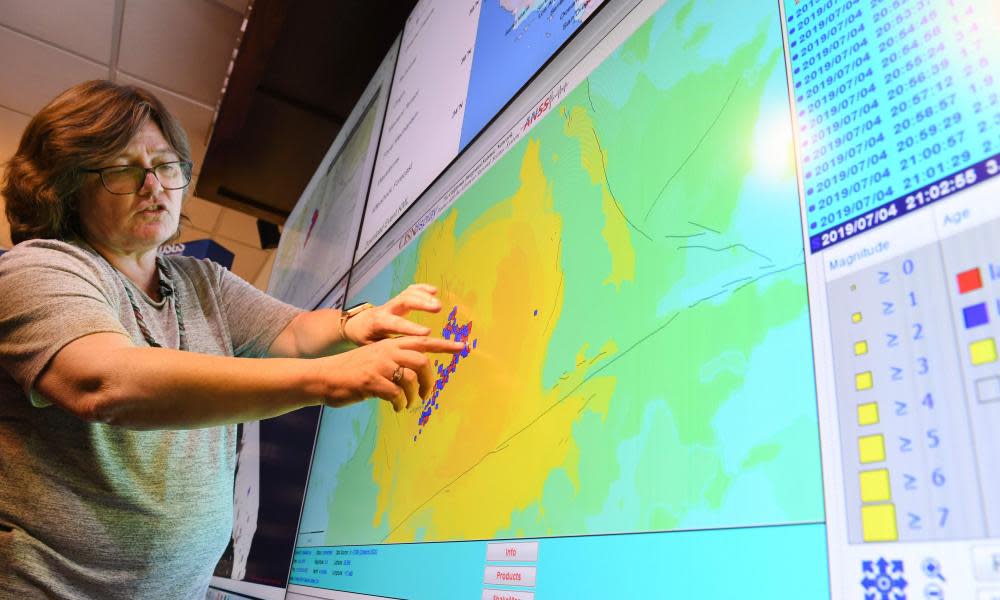California earthquake: five things to know about the tremor near Los Angeles

On Thursday morning, southern California experienced its largest earthquake in two decades. The 6.4 magnitude earthquake struck the remote city of Ridgecrest, near Death Valley national park and about 100 miles (160km) from Los Angeles.
Here’s what you should know about the impact of the quake, and whether more seismic activity will strike anytime soon:
1) How common is this type of earthquake for this region?
It’s pretty common. Southern California sees magnitude 6 earthquakes every three to five years on average, according to Lucy Jones, one of the world’s foremost seismologists. The fact that there hasn’t been one this big in decades is not typical. Over the past 40 years, there have been eight earthquakes of magnitude 5 or higher in this area, according to the United States Geological Survey Earthquake Hazards Program. The largest one was a 5.8 earthquake in 1995.
Related: Largest earthquake in decades hits southern California
2) What should you expect in terms of aftershocks?
In the three hours after the earthquake, there have already been 180 small aftershocks, including 10 with a magnitude of 4, according to Jones. Officials expect that a magnitude 5 aftershock will likely take place in the next day or so. In that time period, an earthquake even larger than the initial quake could also take place.
3) What kind of damage and injuries have been reported?
The earthquake took place in a very isolated area, where few people live. It did not affect any part of the Los Angeles metropolitan area. But there have been reports of structure fires and rock slides, and there could be much more damage that simply hasn’t yet been discovered or reported. “For the people that are nearby, we don’t yet really know what the damage level is,” says Jones. “It might be pretty significant.” There were no injuries immediately reported.
4) How prepared was California for this type of natural disaster?
Jones says the state could do better when it comes to protecting its water systems, which are particularly vulnerable to earthquakes. She says it’s also important to make sure all buildings are up to code, so that they will keep residents safe during any future bad quakes. Overall, she says, “we’re much more prepared than we were and not nearly as prepared as we could be.”
5) What can people expect in terms of future earthquakes in the region?
With over 500 active faults in California, the state is sure to see many more quakes in the future. Perhaps the most worrisome fault in the area is the San Andreas Fault, which, on its southern side, is capable of producing a magnitude 8.2 quake. Luckily, the earthquake on Thursday was over 100 miles from the fault. Jones says overall, it’s important to remember that “the last 25 years has not been normal. It’s been a particularly quiet time. And we need to make sure we don’t think that that’s the definition of what could come in the future.”

